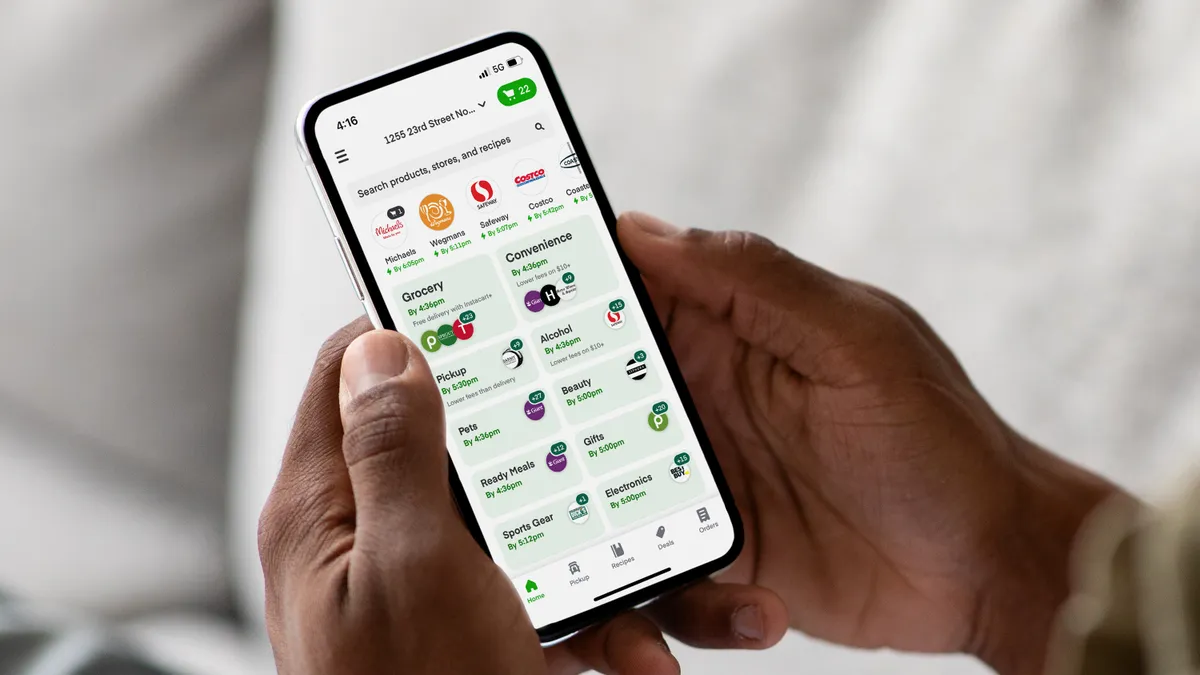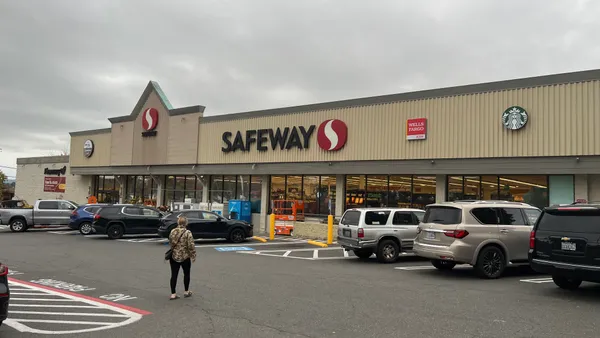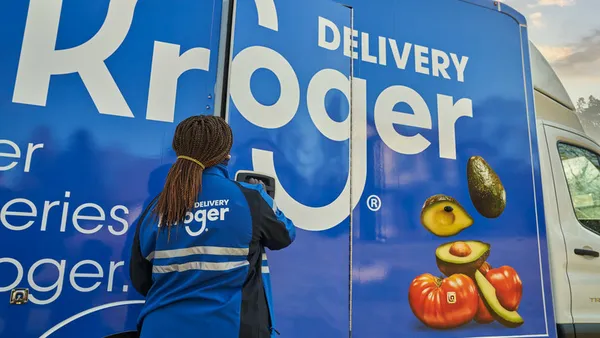Dive Brief:
- Grocery e-commerce totaled $8.8 billion in February, up 1.5% compared to last year, according to the latest monthly e-commerce report from Brick Meets Click and Mercatus.
- The firms found that more U.S. households used only one of the three channels in February, up nearly eight percentage points compared to the same month last year and similar to levels recorded two years ago.
- While the base of monthly active users (MAUs) — the most engaged group of online shoppers — increased by more than 5% year-over-year in February, that group saw its number of completed orders fall almost 9% year-over-year to its lowest level since March 2020, the report noted.
Dive Insight:
The findings from Brick Meets Click and Mercatus indicate that shopper behavior is shifting among the most loyal users of grocery e-commerce.
“The expanding user base for online grocery illustrates its growing reach, but the changing role it plays is evident from contractions in the use of multiple receiving methods and average order frequency, which mostly muted the gains in reach,” David Bishop, partner at Brick Meets Click, said in the announcement.
The low order frequency among MAUs was offset by higher spending per order across the three online channels and its second consecutive year of user base growth.
Ship-to-home sales stood out in February as the only channel that had an average order value increase for the month that exceeded the rate of grocery inflation, the firms noted. Ship-to-home also reversed its months-long year-over-year sales decline, posting a more than 14% increase in February.
Pickup sales increased roughly 2.5% year-over-year, while delivery contracted almost 9.4%, per the report. Among MAUs, pickup has steadily recorded gains while delivery has not. Bishop noted that pickup’s continued growth alongside the slide of delivery also are tied to inflationary pressures on grocery e-commerce.
Mass retailers are continuing to give grocers a run for their money with grocery e-commerce as they continued to bring in more customers on a year-over-year basis. The MAU base for mass retailers grew more than 20% in comparison to February 2022, following a similar increase in January, while the MAU base for grocers constricted to the “mid-to-upper single digits” for at least the second consecutive month, the report noted.
“The changes in the Mass and Grocery user bases illustrate what could be characterized as a ‘flight to value’ as shoppers deal with persistently higher grocery prices,” Bishop said.
Cross-shopping between the two retailer channels was roughly 30% in February, up 300 basis points from a year ago.
The repeat intent rate among first-time customers for grocers trailed mass retailers by five percentage points in February, which was an improvement over January but more than five percentage points lower than February 2022, when grocery beat mass retailers.
“Given that ongoing price inflation is clearly influencing shopping behaviors, grocers should promote ways customers can save more money,” Sylvain Perrier, president and CEO of Mercatus, said in the announcement.
Perrier said grocers should consider highlighting store brands, offering pricing promotions, creating personalized digital coupons and creating variable fee structures that lower fees for customers.
The latest monthly report is based on a survey of 1,745 people from Feb. 26 to Feb. 27.












